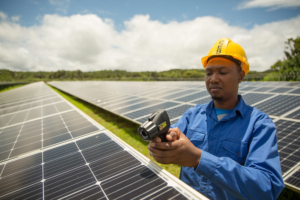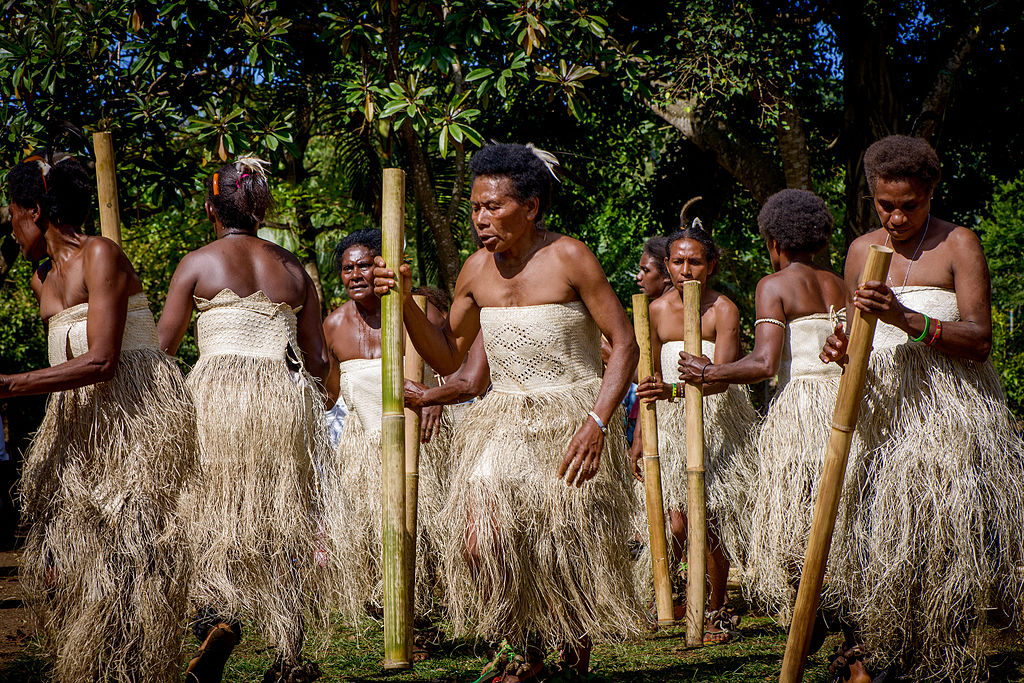

Additionally, the ILO’s Decent Work Agenda, launched in 1999, aims to promote rights at work, fair remuneration and equal opportunity regardless of gender. Under this agenda, the ILO has supported initiatives in countries such as Namibia, Indonesia and Vietnam for progress in wage reform and labor protection.
Namibia
Although Article 95 of the Namibian constitution sets out the principle of fair remuneration, this is ineffective in practice. Many workers, particularly women, still struggle to access fair pay and efforts to increase wages have often just led to increased job losses. In response, the Namibian government, supported by the ILO, initiated the drafting of new labor legislation to set up a new minimum wage system.
A National Wages Commission was first established to hold public hearings nationwide to incorporate feedback from workers and employers. Following this, the ILO gave Namibia a recommendation based on its proposal to gradually increase the minimum wage to give industries time to adjust.
From January 2025, Namibia implemented the new policy, which sets the national minimum wage as N$12 ($0.68) per hour. Incorporating the ILO’s recommendations, this rate will gradually increase to N$15 ($0.85) per hour in 2026. Furthremore, N$18 ($1.02) per hour in 2027. The new policy also addresses the gender pay gap. Women in Namibia make up 40% of the workforce but represent more than half of those earning below the minimum wage. This includes raising wages in female-dominated sectors and the ILO’s continued support in monitoring compliance.
Indonesia
Indonesia has faced ongoing challenges in enforcing the minimum wage, leading to other issues such as job insecurity and poverty. Hence, the nation launched the Better Work Indonesia initiative with the support of the ILO and the International Finance Corporation (IFC) to improve compliance with regulations regarding wages and working conditions.
At the national level, the mission provides training to wage council members. It conducts assessments to understand the impact of wage structures. It has also helped develop more effective minimum wage monitoring systems for better compliance. At the workplace level, the initiative offers compliance advisory services, on-site training and independent assessments to ensure wage regulations are followed.
These efforts protect workers and put Indonesian industries in a more competitive position in the global market, where ethical labor practices are increasingly valued.
Vietnam
Vietnam has also made notable progress under the ILO’s Decent Work Agenda. During the first phase of the Decent Work Country Program, Vietnam reformed its labor code with the ILO’s support. It has increased the national minimum wage since then. However, this progress has slowed recently, as almost 12% of workers earn below the minimum wage.
In response, the Decent Work Country Program Vietnam 2022-26 was launched in cooperation between Vietnamese workers, employers, the government and the ILO. The program is now in its fourth phase. It focuses on social policies for strengthened rule of law, enhanced governance and responsive institutions. In particular, it aims to achieve a gender-responsive economic transformation for all workers to benefit from inclusive, high-quality social services.
Minimum wage in Vietnam is also regularly reviewed with the support of the ILO. For instance, the Setting Adequate Wages (SAW) project helps determine appropriate wage levels. It achieves this by conducting independent wage assessments, publishing wage reports and identifying relevant factors such as socioeconomic factors, inflation and family situations. Based on this information, wages are negotiated to establish a fair rate reflecting the real living cost.
Final Remarks
Namibia, Indonesia and Vietnam show how the ILO’s Decent Work Agenda can shape fair minimum wage policies. These policies help fight poverty and raise workers’ living standards. Today’s consumers increasingly demand ethical and sustainable industries. As a result, fair labor practices and minimum wage compliance are more important than ever. They boost global competitiveness and fuel long-term economic growth.
– Lucy Cho
Lucy is based in Edinburgh, Scotland and focuses on Good News and Politics for The Borgen Project.
Photo: Unsplash









